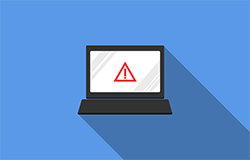 The purpose of third-party coverage in an Employment Practices Liability (EPLI) policy is to protect an organization and its employees from accusations of wrongful acts committed against customers, clients, vendors, and suppliers. Some EPLI policies also cover wrongful acts committed by third parties against the insured’s employees.
The purpose of third-party coverage in an Employment Practices Liability (EPLI) policy is to protect an organization and its employees from accusations of wrongful acts committed against customers, clients, vendors, and suppliers. Some EPLI policies also cover wrongful acts committed by third parties against the insured’s employees.
Harassment and all forms of discrimination are covered under wrongful acts. Discrimination claims include discriminatory practices against a person based on their race, religion, age, sex, national origin, disability, pregnancy or sexual orientation. Harassment involves unwanted sexual advances or requests for sexual favors. Both verbal and physical conduct, as well as other forms of harassment that create a hostile or offensive work environment, are covered. Some policies also cover accusations of mental anguish, emotional distress, humiliation and assault.
If your organization has a lot of interaction with the public, it is especially vulnerable to third-party claims like those described above. In some cases, EPLI carriers might not provide third-party coverage to firms with a high potential for claims. What they might offer instead is limited coverage, such as covering accusations of discrimination, but not harassment claims.
To protect your organization from third-party claims, you need to go beyond just purchasing coverage. You must implement policies and procedures that address discrimination and harassment issues, both from the standpoint of an employee’s actions and the actions of third parties. EPLI insurers are increasingly requiring employers to implement these practices before they will issue a policy.
Having policies in place will offer little help to stop third-party claims if employees aren’t adequately trained. New employee orientation programs should include a presentation outlining the organization’s harassment/discrimination policies. The training must also include how to report and handle a third-party claim.
However, hearing the information once is not enough to insure compliance. Employees must be retrained periodically through departmental meetings. To maintain the effectiveness of departmental training sessions, be sure that supervisors are provided with copies of all policy updates and procedural changes.
One important caveat to keep in mind is that most EPLI policies don’t provide third-party coverage for accusations involving the violation of the Americans with Disabilities Act (ADA). Nevertheless, you should review your EPLI policy’s definition of a claim to determine the policy’s interpretation. Many policies define a claim as a “demand for monetary damages.”
This definition can present a problem in an ADA claim, because many of these claims are asking for reasonable accommodations, not monetary awards. That’s why it is important to ensure that your policy’s definition of a claim includes claims for non-monetary damages. A policy with this expanded definition will cover defense costs and indemnity connected with an ADA claim, but will not provide the funds to bring your organization into compliance with the provisions of the law.














